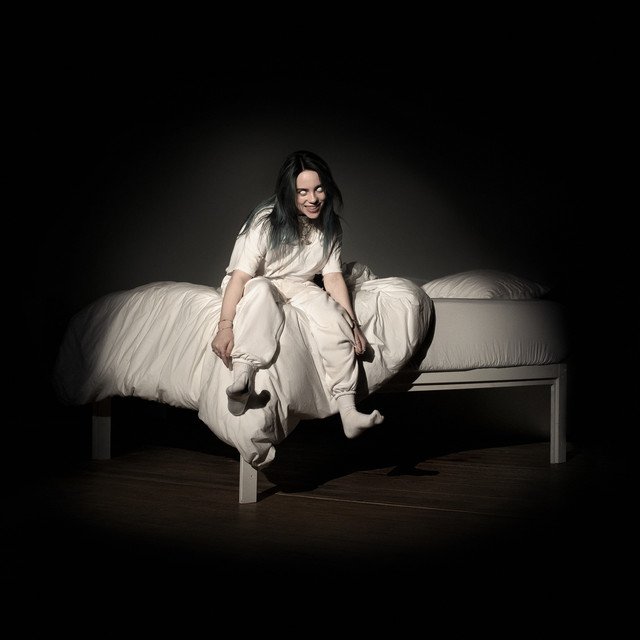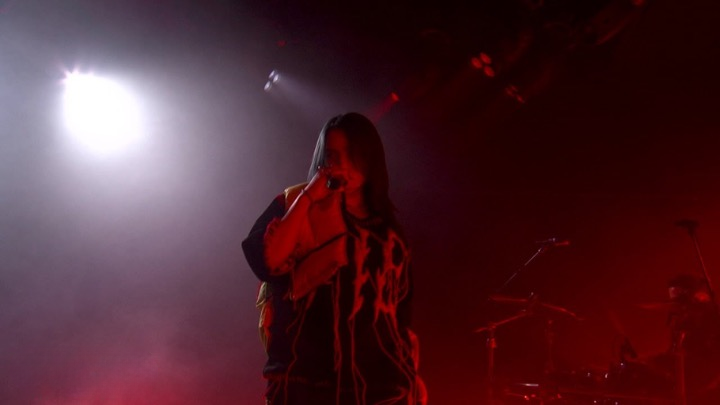Introduction:
Few songs have stirred as much intrigue and emulation as Billie Eilish’s Bad Guy.
Since its release, the bad guy song has not only climbed the charts but also burrowed into the cultural consciousness, resonating through TV shows and movie soundtracks to becoming a defining anthem of its time.
With its subversive lyrics and Eilish’s hauntingly nonchalant delivery, Billie Eilish Bad Guy has transcended the traditional pop narrative, turning the concept of the villain character on its head and inviting listeners to explore the duality within.
The Genesis of Bad Guy
The inception of the song is a testament to Billie Eilish’s and Finneas O’Connell’s innovative approach to music creation. Crafted in a small bedroom studio, this chart-topping hit began as a playful experiment with bass lines and evolved into a genre-bending track that would disrupt the music industry.
The siblings’ synergy is palpable in every note, a dynamic that has been explored in various interviews, including their insightful breakdown of the song’s creation in an interview, offering fans a glimpse into their collaborative genius.
Album’s Narrative Blueprint
Eilish strategically placed Bad Guy as the first track of her debut album, When We All Fall Asleep, Where Do We Go?. She told PopBuzz, “I knew I wanted ‘bad guy’ to be first, and ‘xanny’ to be next, and that was like, all I knew from the beginning.”
Dissecting the Lyrics
The bad guy lyrics are a labyrinth of wit and irony, painting Eilish as the titular “villain character” with a twist.
The song subverts the typical bravado associated with the bad guy trope, instead delivering a nuanced portrayal of a complex persona.
Each line of the lyrics is a deliberate choice, reflecting a maturity beyond Eilish’s years.
Eilish explained to KIIS FM, “It’s basically making fun of everyone and their personas of themselves. Even mine.”
The Music Video: A Visual Companion to the Lyrics
The Bad Guy music video is as much a cultural icon as the song itself. It’s a visual feast, laden with vibrant colours and surreal imagery that perfectly encapsulate the song’s essence.
The music video features Eilish in various scenarios, such as dancing with bloodied noses, riding a toy car, and burying a man alive.
The video’s directorial choices have been dissected by fans and critics alike, each frame offering a new perspective on the song’s themes.
Record-Breaking Achievements
Since its release, Billie Eilish Bad Guy has shattered records and cemented itself as an award-winning single.
The song reached the top of the Billboard Hot 100, a historic achievement.
Eilish was the first artist born in the 21st century to do so.
She also dethroned Lil Nas X’s Old Town Road, which had dominated the chart for a record-breaking 19 weeks.
The Recording Industry Association of America (RIAA) has certified Bad Guy multi-platinum, a testament to its widespread appeal and the streaming records it continues to break.
Cultural Impact and Influence
Bad Guy is not just a song; it’s a cultural phenomenon that has left an indelible mark on the zeitgeist.
Billie Eilish, with her subversive pop anthem, has influenced more than just the music charts; she’s impacted fashion, language, and the archetype of the “villain character” in popular culture.
Her distinctive style, characterised by oversized clothing and neon-green hair, has inspired a wave of fashion trends, with pieces echoing her aesthetic appearing in stores and influencing designers.
The song’s lyrics have infiltrated everyday language, with phrases like “I’m the bad guy, duh” becoming a staple in memes and social media.
The influence of bad guys in Eilish’s narrative extends beyond entertainment, challenging societal norms and empowering a new generation to embrace their individuality.
The Song’s Reach in Media: A Soundtrack Staple
Bad Guy has found its way into an array of TV shows and films, showcasing its versatility and universal appeal. Its presence in media underscores the song’s broad resonance.
Some examples of media that have featured the song are:
The Simpsons: The song was parodied in the episode “The Hateful Eight-Year-Olds,” with Lisa Simpson singing “I’m the Sad Girl.”
Brightburn: The song was used in the trailer and the end credits of the superhero horror film, fitting the theme of a twisted origin story.
Altered Carbon: The song was used in the second season of the sci-fi series, adding a contrast to the futuristic setting.
Live Performances and Renditions
Billie Eilish’s live performances of Bad Guy are as electrifying as the song itself. Each show is a spectacle, showcasing her ability to captivate an audience with her enigmatic presence.
From her Coachella debut to her memorable rendition on Saturday Night Live, Eilish has proven that Bad Guy is not just a studio wonder but a live-show powerhouse.
The song’s reach extends beyond Eilish’s own performances, with numerous artists across various genres offering their own renditions, further cementing its status as a cross-genre hit.
Critical Reception and Industry Perspective
Upon its release, Bad Guy received widespread acclaim from music critics and industry experts.
Lauded for its innovative production and Eilish’s vocal style, the song has been hailed as a breath of fresh air in the pop music landscape.
Publications praised its “devilish charm” and “playful production,” while others highlighted the song’s ability to defy and redefine pop music norms.
The industry has taken note of Eilish’s success, with many considering Bad Guy a harbinger of the future of music, where genre boundaries are blurred and authenticity reigns.

The Legacy of Bad Guy
As the dust settles on the initial explosion of Bad Guy, its legacy continues to grow.
The song has become a defining moment in Billie Eilish’s career, a benchmark for pop music, and a blueprint for aspiring artists.
Its success story is one that will be studied and admired for years to come, as it encapsulates the power of innovation and authenticity in an often homogeneous industry.
Bad Guy has not only secured Billie Eilish’s place in music history but has also paved the way for future artists to break the mould and chart their own unique courses.
Conclusion
Bad Guy is a song that has challenged and changed the landscape of pop music.
It has transcended the realm of music, embedding itself into the fabric of pop culture. Eilish and Finneas have created a masterpiece that has redefined the archetype of the pop music villain.
In reflecting on the song’s widespread appeal, Eilish mused to DWDD, “I think it’s just fun. It’s catchy. It’s a weird-ass song! But it’s catchy.”
And indeed, Bad Guy has proven to be an enduring earworm, a track that has not only defined an era but will also continue to influence the trajectory of pop music for years to come.
You might also like:
- Olivia Rodrigo’s Can’t Catch Me Now: The Anthem of Rebellion in The Ballad of Songbirds and Snakes
- Mitski My Love Mine All Mine Lyrics: A Deep Dive into the Song’s Meaning and Inspiration
- OLI’s Better Than Before – A Lyrical Journey Through Acceptance and Growth
- Stay By The Indien – A Timeless Confession Of Love And Fear


